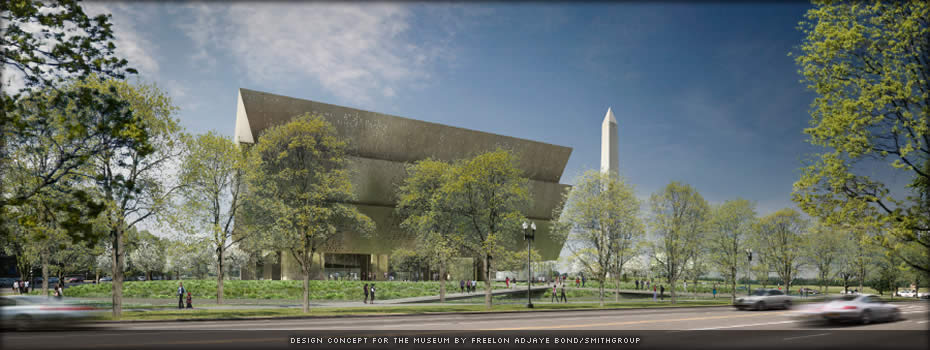Beaufort County visit inspires director of Smithsonian’s African American museum

Beaufort County and Gullah culture will be on display at the Smithsonian’s museum on African-American history, which is set to open in 2016 in Washington, D.C. (Museum rendering pictured above.)
Beaufort County tells an important story of the African-American experience, a Smithsonian museum’s founding director says.
Lonnie Bunch, who has been working for nearly 10 years with the Smithsonian’s National Museum of African American History and Culture, spent the weekend in Beaufort County learning about African-American life in the Lowcountry.
He saw the authentic slave cabins at the Heyward House in Bluffton, and the grave of Robert Smalls in Beaufort.
He dined with commissioners of the Gullah Geechee Cultural Heritage Corridor, and toured Penn Center during Heritage Days festivities Saturday.
Renowned Gullah leader Emory Campbell guided him on a tour of Hilton Head Island’s historic African-American communities, including Mitchelville and Spanish Wells.
On Sunday, about 75 people attended a reception and question-and-answer session at the University of South Carolina Beaufort’s Hilton Head Gateway Campus in Hardeeville.
As his three-day visit came to an end, Bunch said he was inspired and motivated by what he saw.
“It was exciting to see the possibilities, to see the excitement and passion of this community,” Bunch said. “It’s not something you see in a lot of places.”
Beaufort County and Gullah culture will be on display at the Smithsonian’s museum on African-American history, which is set to open in 2016 in Washington, D.C. An early edition of the Gullah Bible from St. Helena will be part of the museum, as well as oral histories from Beaufort County residents.
One exhibit will look at Gullah/Geechee culture — the centrality of family, people’s connection to Africa, the Gullah/Geechee language, and the importance of the rice culture in America and how it was brought here and carried on by the Gullah/Geechee.
Bunch said the museum will become a reality because of people such as Campbell, who introduced Bunch at Sunday’s reception. Bunch said he has known Campbell for more than 15 years.
“One thing I realized as I build a national museum is how much the work of pioneering people like Emory Campbell shapes what I’m doing,” Bunch said. “Emory is representative of people across the country who find it important to preserve a part of history. I want to make sure I honor those pioneers.
“One way of honoring them is by making sure the work they do will continue on long after they’re involved.”
And Bunch said he and the Smithsonian are not done with Beaufort County.
“The opportunities here are so great. I’d like to be a part of it,” Bunch said. “And I don’t know what it looks like yet. But when the Smithsonian comes to town, it helps. It helps with visibility, credibility. And we want to partner with you in a way that works for you.”
“Once this museum opens, as long as there’s an America, there’s a chance to learn this story, and to be made better by the African-American experience,” Bunch said. “The story of the Gullah/Geechee culture is important for this nation to know.”

